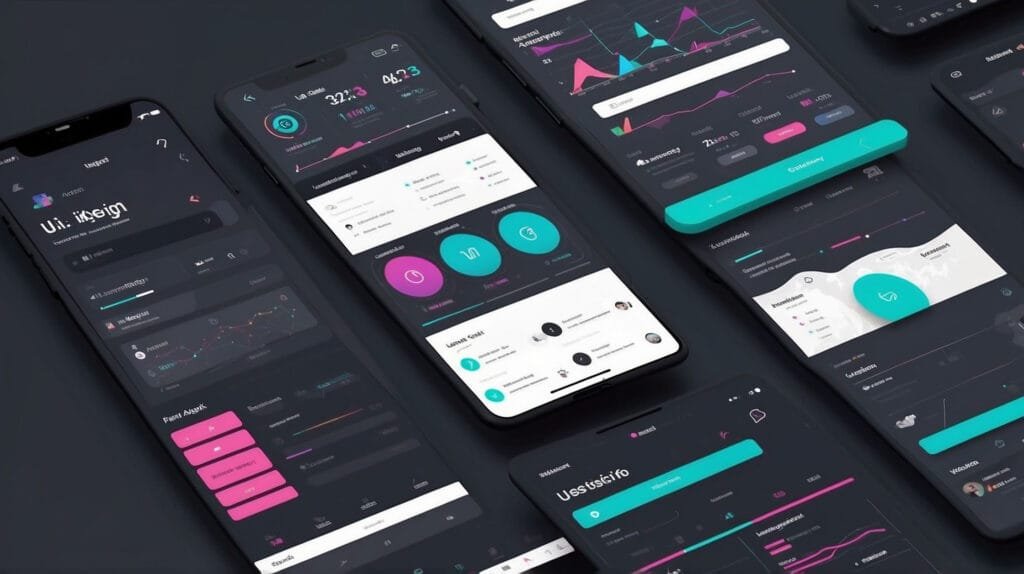What Are the Top UI/UX Design Tools Every Designer Should Know?
The world of UI/UX design is ever-evolving, with designers relying on advanced tools to create engaging, user-friendly interfaces. From wireframing to prototyping, these tools streamline workflows and foster collaboration. Whether you’re a beginner or a seasoned designer, knowing the best tools can elevate your design game.
In this blog, we’ll explore the top UI/UX design tools, their features, and why they are essential for creating exceptional user experiences.
Why Are Tools Important in UI/UX Design?
UI/UX design involves creating interfaces that are not just visually appealing but also highly functional. Tools play a pivotal role in this process by offering features like:
- Prototyping: Allows designers to test user interactions before development.
- Wireframing: Provides a blueprint of the design.
- Collaboration: Enables team members to work together in real time.
- Efficiency: Automates repetitive tasks, saving time and effort.
These tools empower designers to bring their visions to life while ensuring the designs are intuitive and user-centered.
1. Figma: Collaborative Design Made Easy
Figma has become a go-to tool for UI/UX designers, thanks to its cloud-based platform. Key features include:
- Real-time collaboration.
- Cross-platform compatibility (works on Mac, Windows, and even the browser).
- Plugins for extended functionality, such as accessibility checks and icon libraries.
Why Figma?
Its collaborative features make it perfect for teams working remotely or across different time zones.
2. Adobe XD: The All-in-One Solution
Adobe XD offers a robust environment for designing and prototyping. It seamlessly integrates with other Adobe products like Photoshop and Illustrator, making it ideal for designers familiar with the Adobe ecosystem.
Features to Highlight:
- Interactive prototypes with animations.
- Voice command integration.
- Plugins to enhance productivity.
Pro Tip: Adobe XD’s repeat grid feature can save hours when designing similar components.
3. Sketch: A Pioneer in UI Design
Sketch is renowned for its simplicity and focus on UI design. While it’s exclusive to macOS, it remains a favorite among many designers.
What Makes Sketch Unique?
- Extensive library of plugins.
- Easy-to-use vector editing tools.
- An active community providing templates and resources.
For macOS users, Sketch is a reliable, lightweight option for creating stunning designs.
4. InVision: Prototyping and Beyond
InVision is a versatile tool for UI/UX design, focusing on prototyping and collaboration. Its unique features include:
- Clickable prototypes for user testing.
- Feedback tools that let stakeholders comment directly on designs.
- Design System Manager (DSM) for consistent branding.
InVision is ideal for teams that prioritize user feedback and iterative improvements.
5. Axure RP: For Advanced Prototyping
Axure RP is a powerful tool for creating detailed wireframes and prototypes. Unlike simpler tools, it supports complex functionalities like:
- Conditional logic.
- Dynamic content.
- Integration with tools like Jira for project management.
Axure RP is perfect for projects that require detailed specifications and interactivity.
Additional Tools to Consider
While the above tools are industry favorites, here are a few more worth mentioning:
- Canva: Simplifies creating presentations or quick visuals.
- Balsamiq: Great for low-fidelity wireframes.
- Principle: Ideal for motion and interaction design.
- Zeplin: Bridges the gap between design and development by exporting assets and specs for developers.
How to Choose the Right Tool?
Selecting the right tool depends on factors like:
- Project Requirements: Prototyping? Collaboration? High-fidelity design?
- Team Size: Tools like Figma excel in team settings.
- Budget: Free options like Figma or paid tools like Adobe XD?
- Platform: Mac-only (Sketch) or cross-platform (Figma)?
Assess your needs and experiment with free trials to find the perfect fit.
Tips for Enhancing Your UI/UX Design Workflow
To maximize your efficiency, follow these tips:
- Stay Updated: New features and tools are launched frequently; keep learning.
- Leverage Plugins: Extend the functionality of tools like Figma and Adobe XD.
- Collaborate Effectively: Use tools that allow real-time teamwork.
- Focus on Feedback: Incorporate user feedback early and often.
By combining the right tools with best practices, you can create designs that not only look great but also provide a seamless user experience.
Conclusion
The right tools can make or break your UI/UX design process. Figma, Adobe XD, Sketch, InVision, and Axure RP are among the best tools every designer should know. Each tool brings unique features tailored to different aspects of the design process, from prototyping to team collaboration. By leveraging these tools and following industry best practices, you can craft designs that delight users and meet project goals.



